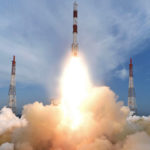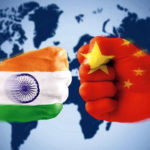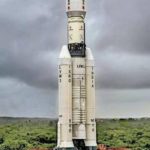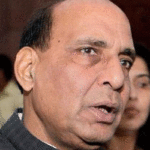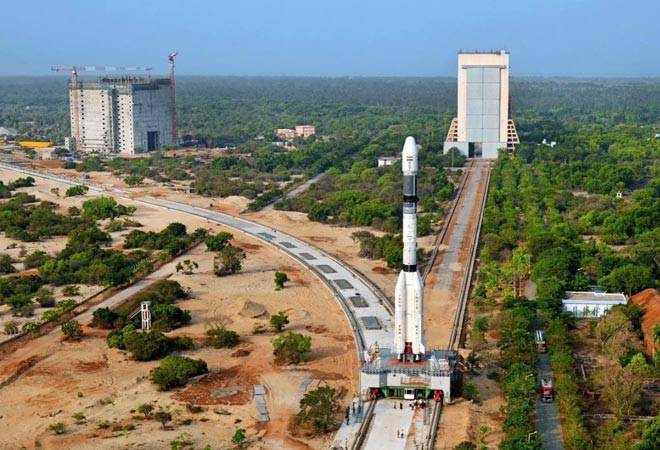
The Indian Space Research Organisation on Friday successfully launched its heaviest rocket, the Geo-Synchronous Satellite Launch Vehicle (GSLV) for the eleventh time.
Carrying the geostationary communication satellite, the lift off, three minutes before 5 pm put into orbit GSAT-9 or the South Asia Satellite which is expected to boost communication links among South Asian countries.
In a tweet, Prime Minister congratulated the team of scientists who worked hard for the successful launch of South Asia Satellite. We are very proud of them, PM Modi said.
This will also greatly benefit South Asia and our region’s progress. Successful launch of South Asian Satellite is a historic moment. It opens up new horizons of engagement, PM Modi said.
I welcome President Ashraf Ghani, PM Sheikh Hasina, PM Tshering Tobgay, President Abdulla Yameen, PM Prachanda, President Maithripala Sirisena. All the leaders will take part & address the programme via video conferencing at 5.30 PM this evening, PM Modi added.
GSLV with indigenous Cryogenic Upper Stage carrying GSAT-9 blasted off from the Second Launch Pad (SLP) at Satish Dhawan Space Centre, Sriharikota in Andhra Pradesh. The 28-hour countdown for the launch began on Thursday at 12:57 pm, after which ISRO Chairman AS Kiran Kumar said, “We have the launch tomorrow at 4.57 pm in the evening… All activities are going on smoothly.”
South Asian satellite will connect seven regional countries – all part of the South Asian Association for Regional Cooperation (SAARC) except Pakistan. The cost of launch estimated to be around Rs 450 crore will be borne by India.
This will be the first time when New Delhi will be flexing its prowess of space technology by embarking on an unprecedented and un-chartered ‘stratospheric diplomacy.’
Seven of the eight SAARC countries–India, Sri Lanka, Bhutan, Afghanistan, Bangladesh, Nepal and Maldives, are a part of the project. Pakistan had decided to opt out, stating “it has its own space programme.”
The launch of the South Asian Communication satellite is being seen as part of India’s soft power in the region. In 2013, Isro received worldwide applause for sending a low-cost orbiter named Mangalyaan to Mars. India became the first country to succeed in doing so on its first attempt.
Here are a few things you should know about Isro’s GSLV launch today:
- The South Asia Satellite has 12 Ku band transponders which India’s neighbours can utilise to increase communications. Each country will get access to at least one transponder through which they could beam their own programming and there could be common ‘south Asian programing’ as well.
- These neighbours will together benefit to the tune of Rs 10,000 crore ($1.5 billion) over the satellite’s 12-year lifespan. This is the first time a regional technological powerhouse has gifted a communications satellite to its neighbours. There are no parallels in the space-faring world, all other current regional consortia are commercial for-profit enterprises.
- The satellite, costing around Rs 235 crore, is meant for providing communication and disaster support, connectivity among the countries of South Asia region.
- After coming to power in May 2014, Prime Minister Narendra Modi had asked ISRO scientists to develop a SAARC satellite that can be dedicated to neighbouring countries as a “gift from India.”
- On his ‘Mann ki baat’ programme on Sunday last, Modi had announced that the South Asia Satellite would be India’s “priceless gift” to its neighbouring countries. “On May 5, India will launch the South Asia Satellite. The benefits of this satellite will go a long way in meeting the developmental needs of the countries participating in this project,” Modi had said.
- The nearly 50-m-tall rocket that weighs about 412 tons will carry what is now dubbed as the ‘South Asia Satellite’ or what the Indian Space Research Organisation (ISRO) still prefers to call GSAT-9.
- Each country has to develop its own ground infrastructure though India is willing to extend assistance and know-how.
- According to the government. the satellite will “enable a full range of applications and services to our neighbours in the areas of telecommunication and broadcasting applications viz. television, direct-to-home (DTH), very small aperture terminals (VSATs), tele-education, telemedicine and disaster management support”.
- The satellite also has the capability to provide secure hot lines among the participating nations in addition since the region is highly prone to earthquakes, cyclones, floods, tsunamis, it may help in providing critical communication links in times of disasters.
- Experts say “Pakistan has missed an opportunity” since its own space program is currently in a primitive stage as compared to India’s. This is despite the fact that Pakistan actually launched its first rocket five years ahead of India and its space agency Pakistan Space and Upper Atmosphere Research Commission (SUPARCO) is older than ISRO. Pakistan has had five satellites in space but today lacks heavy duty launchers and satellite fabrication facilities.
- On future launches, Kumar said, ISRO would launch the GSLV MK III variant which would be followed by Polar Satellite Launch Vehicle (PSLV) in the coming months. Further, ISRO would launch Chandrayaan-II in the beginning of next year, he added. The previous launch of communication satellite GSAT-8 was on May 21, 2011 from Kourou, French Guiana.

